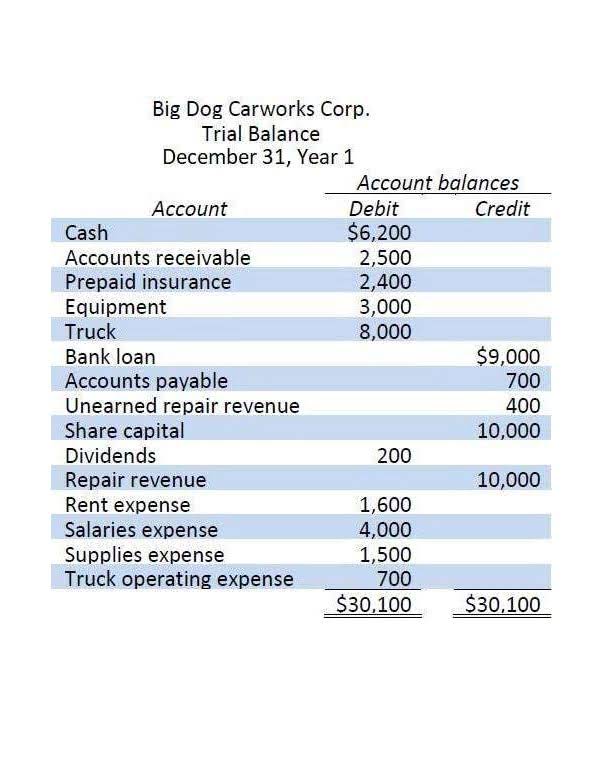
This will determine the mix of tests of control and substantive procedures but both will tend to focus on transactions that have occurred so far in the period. The test of fixed assets disposal will ensure the rights and obligations, completeness, occurrence, and accuracy audit assertion. As auditors, we have the responsibility to perform preliminary analytical procedures in the planning stage of the audit. In this case, trend and ratio analysis are the two procedures that we usually use in the preliminary analytical procedures for the audit of fixed assets.
What are the five audit assertions?
These techniques are designed to gather sufficient and appropriate evidence, enabling auditors to form a reliable opinion on the financial statements. Financial statement assertions can be categorized into several types, each addressing different aspects of the financial data. These categories help auditors focus their efforts on specific areas of the financial statements, ensuring a comprehensive evaluation of the company’s financial health. Understanding these assertions is crucial because they directly influence how accounting assertions audit auditors plan and execute their audit procedures. The effectiveness of an audit hinges on accurately testing these assertions to detect any material misstatements that could mislead stakeholders.

Valuation

These documents are useful not only for strategic planning and forecasting, but for auditors, who rely on the organizations they audit to be truthful. He began his career with Ernst & Young in 2003 where he developed his audit expertise over a number of years. Isaac specializes in and has conducted numerous SOC 1 and SOC 2 examinations for a variety of companies—from startups to Fortune 100 companies. Isaac enjoys helping his clients understand and simplify their compliance activities. He is attentive to his clients’ needs and works meticulously to ensure that each examination and report meets professional standards.
Achieving Reasonable Assurance in Audits and Risk Management
Valuation of the balance sheet items must be correct as overvalued or undervalued accounts will result in a false representation of the financial facts. This type of assertion is related to the proper valuation of the assets, the liabilities, and the equity balances. You must perform the valuation properly to reflect an accurate and fair position of the company’s financial position. The valuation or allocation assertion concerns the accuracy and appropriateness of the recorded values for assets, liabilities, revenues, and expenses. Auditors assess whether the values assigned to items in the financial statements are in accordance with applicable accounting standards and reflect their fair value.
- For instance, the format of the Income Statement and theBalance Sheet should reflect the standards that are provided in the system thatthe corporation follows.
- By identifying significant deviations from these expectations, auditors can pinpoint areas that may require further investigation.
- Company executives are required to make assertions or claims to the public regarding certain aspects of a business.
- Financial Statement Assertions refer to claims of the accuracy and completeness of data presented in financial statements by the management of an organization.
- Evidence gathered by formal or informal inquiry generally cannot stand alone as convincing.
- Unless you’re an auditor or CPA, you’ll never have to worry about testing audit assertions, and if you continue to enter financial transactions accurately, you won’t have much to worry about during the audit process.
Technology has significantly enhanced the techniques available for testing assertions. Data analytics tools allow auditors to analyze large volumes of data quickly and efficiently, identifying patterns and outliers that might indicate https://rmtextile.com/4-7-closing-entries-business-libretexts/ potential issues. For example, auditors can use data analytics to perform continuous monitoring of transactions, flagging any that deviate from established norms for further review. Additionally, audit software can automate routine tasks, such as sampling and confirmations, freeing up auditors to focus on more complex and judgmental areas of the audit.


This targeted approach not only enhances the efficiency of the audit but also increases the likelihood of detecting any discrepancies or misstatements. Testing audit balance sheet assertions requires a blend of analytical procedures, substantive testing, and the use of advanced technology. Auditors often begin with analytical procedures, which involve comparing financial data against expected trends and industry benchmarks. This helps in identifying unusual patterns or discrepancies that warrant further investigation. For instance, if an auditor notices a significant deviation in inventory levels compared to previous periods, it might indicate issues with the existence or valuation assertions.
Audit assertions are also known as financial statement assertions or management assertions. For liabilities, it is an assertion that all liabilities listed on a financial statement belong to the company and not a third party. To test the authenticity of this assertion, individuals can review legal documents, such as deeds and borrowing agreements for loans and other debts. This assertion indicates that transactions or products have been categorized and documented in the appropriate accounts or classifications, respectively. For instance, salaries paid to office personnel are classed and reported as administrative expenditures, but payments made to products department employees are categorized and reported as a manufacturing cost. The debt is appropriately categorized as both current and non-current assets, according to accounting standards.
Financial statement assertions are fundamental to the audit process, providing a framework for auditors to evaluate the accuracy, completeness, and fairness of financial reporting. By understanding and testing these assertions, auditors can identify potential risks of material misstatement and gather sufficient and appropriate evidence to support their audit opinion. Assertions ensure that all aspects of the financial statements—transactions, account balances, and disclosures—are addressed, contributing to the reliability and credibility of financial reporting. Ultimately, financial statement assertions help auditors deliver high-quality audits that provide confidence to stakeholders in the integrity of the financial statements. Financial statement assertions are the representations made by management regarding the accuracy and completeness of the financial statements.
- One reason for not proceeding with an audit is that the inability to obtain a management assertions letter could be an indicator that management has engaged in fraud in producing the financial statements.
- This is important in understanding (for example) a company’s debt profile or ensuring stakeholders have a properly contextualized grasp of readily available assets and cash flow.
- Financial statements are of limited utility if they’re not readily understood by stakeholders.
- These assertions attest that the preparers abided by the necessary regulations and accounting standards when preparing the financial statements.
For example, the occurrence of $4 million in revenue means one thing under GAAP and quite another under the cash basis of accounting. These classes can be revenue, expenses, and accounts that involve payments like a dividend. For example, an auditor may recalculate depreciation expenses and test asset purchase vouchers to ensure the proper valuation of asset balances. For example, auditors may check to ensure that the client hasn’t posted purchases to salaries and wages accounts. It refers to the fact that all the transactions have been recognized accurately at their correct amounts. For instance, any adjustments required have been correctly reconciled and accounted for in the statements.

Examples include the cost of tangible and intangible materials, which are completely quantified and reflected in the financial statements. All the purchase orders that took place throughout the time are thoroughly documented in the accounting records of the company. Audit assertions are claims made by management when preparing financial statements. This assertion checks if asset, liability, or equity balances in the balance sheet actually exists. Therefore, other names may include management or financial statement assertions. While these are the most prominent ones, companies also prepare the cash flow statement and statement of changes in equity.

Leave a Reply